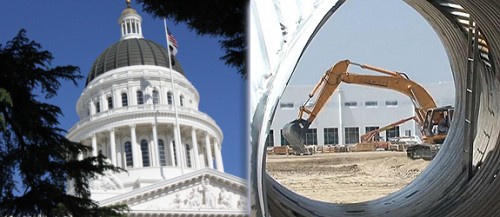
(Photo Credit: John Guenther)
A version of this story was published in the San Jose Mercury News.
In June 2009, the Los Angeles Times published a commentary by Phil Trounstine and Jerry Roberts with the catchy opening line: “California is ungovernable.”
That was then.
Five years later, California is not only “governable,” but it is being viewed nationally as an example of responsible governing.
Over that time, a number of organizations and individuals, CA Fwd included, promoted reforms intended to reduce hyper-partisanship, financial foolishness and the friction among governments. Many of these reforms targeted the list of diseases that Trounstine and Roberts said needed to be cured.
It is an impressive list: Voters claimed the authority to draw election district boundaries from incumbents, agreed to a little more flexibility in term limits, reduced the vote threshold to pass the state budget to a simple majority of lawmakers, and enacted the “top-two” open primary. The Governor and the Legislature, in turn, gave up authority to solve problems that are better solved at a regional or community scale.
The effects of these reforms can’t be ignored.
The June 3 election results are a clear indication that the open primary is eroding the powers that contributed to partisan rigidity. Whether the open primary is working depends on your point of view. The growing opposition of partisan political strategists is a good indicator that the reform is giving voters choices that some wished we didn’t have.
But even before the pot-stirring primary, elected leaders had demonstrated an increasing interest in solving problems and being more careful with public funds.
Just last month, Governor Brown and state lawmakers demonstrated bipartisan leadership in putting a budget reserve requirement on the November ballot. The constitutional amendment includes two CA Fwd recommendations:
- Capturing spikes in revenue to end boom-and-bust budgets; and,
- Making consistent deposits into the reserve so funds are available during recessions.
This balanced approach will discourage the kinds of short-sighted decisions that historically jeopardized critical services, especially for vulnerable Californians. The next step is to develop an innovative way to ensure stable and adequate revenue for critical public investments, especially education.
Indeed, the next few years will be critical in maintaining on three fronts:
We must encourage more good jobs.
For the first time in history, California’s middle class shrank. While the state is leading the nation in creating jobs, to revive the California Dream we need to find ways to keep and grow manufacturing and other well-paying jobs that made the state prosperous.
Toward that end, the California Economic Summit, a partnership of CA Fwd and the California Stewardship Network, is coordinating volunteer action teams of private, public and civic leaders to advance a shared economic agenda for the state’s regional economies.
The Summit is working to align the workforce needs of employers with Californians striving for the next rung on the ladder. Leaders are working on ways to invest in smart infrastructure for a growing population and to modernize regulatory approaches to protect California without discouraging investments and job creation.
We must improve community services.
The significant devolution of authority to counties and school districts has the potential to improve millions of lives – but only if local governments increase their ability to make smart decisions and manage cost-effective programs.
CA Fwd, for example, is working with Riverside County to develop a community correctional system that will make the best use of public dollars to reduce crime, violence and drug abuse. CA Fwd is working with the California School Boards Association to accelerate learning among school districts now charged with developing local control accountability plans.
We must deploy technology to bolster democracy.
California ranks 49th in voter participation. The June primary turnout was abysmal; 20 million Californians of voting age didn’t vote! These are symptoms of a deeper issue, which will take time to resolve – reestablishing the people’s trust in government. But we know where to begin:
- California’s treasured citizen’s ballot initiative process needs to be refined so people can understand what they are voting on and who is supporting the initiatives. The Legislature is considering legislation that is a first step.
- Cal-Access – the state’s dilapidated computer system for revealing campaign contributions and lobbying expenditures – needs to be overhauled. The next Secretary of State needs to make this happen.
- County election officials, like L.A. County’s innovative Dean Logan, are working to make voting easier and more understandable for California’s diverse population.
California will always have problems. Governability is the capacity to solve them. It turns out fixing one problem makes it easier to fix the next one. There is a lot more work to be done, but California is governable again and we must be diligent to defend and advance the progress we have made.
Lenny Mendonca and Thomas McKernan are co-chairs of California Forward’s Leadership Council. Both have served since the organization was founded in 2008.

